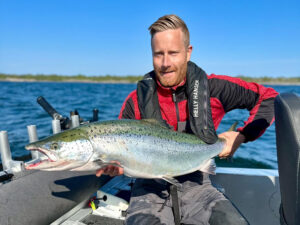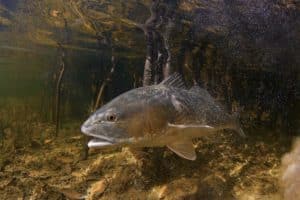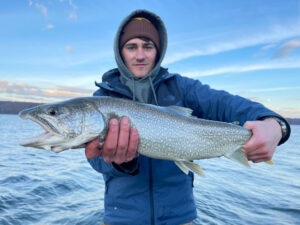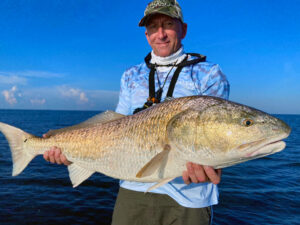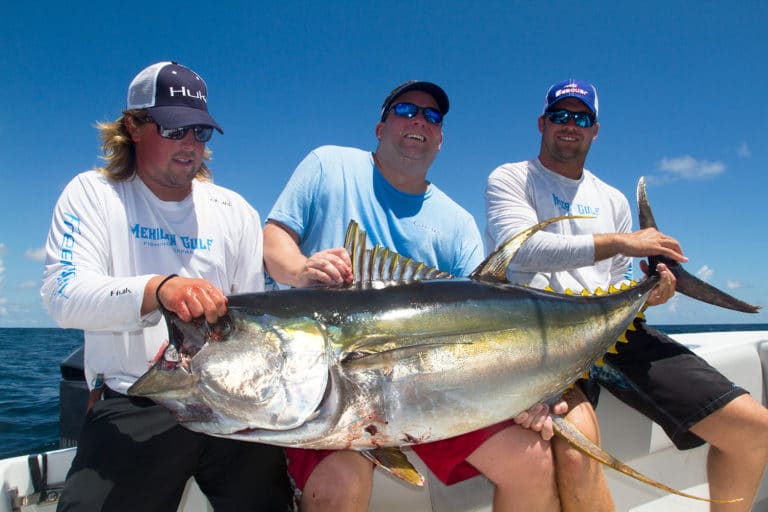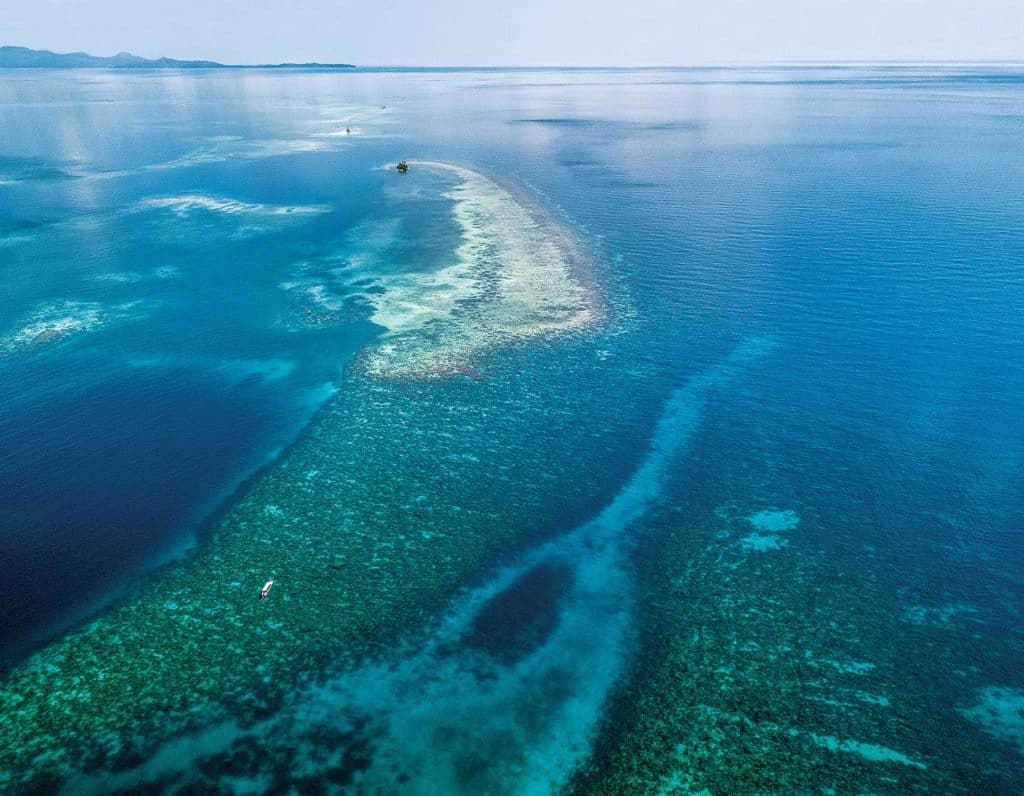
Chris Russell is one of those guys who seems born ready: By the time the skiff sat where guide Kessel Cooper planned to anchor it atop the shallows, before I had even put on my second wading shoe, Russell — marketing manager for Plano — had hopped over the gunwale. He walked slowly, holding a light rod with a Quantum Smoke Inshore 25 spinning reel poised for action. Russell had gone maybe 50 feet when Cooper, standing in the skiff, pointed out a shadow, faint in the gray light under heavily overcast skies early on that October morning. The angler made his cast, and the hermit crab on a light-wire snelled hook dropped 10 feet or so beyond the shadow. “Reel, reel!” Cooper urged, sotto voce. “Now stop. Stop it!”
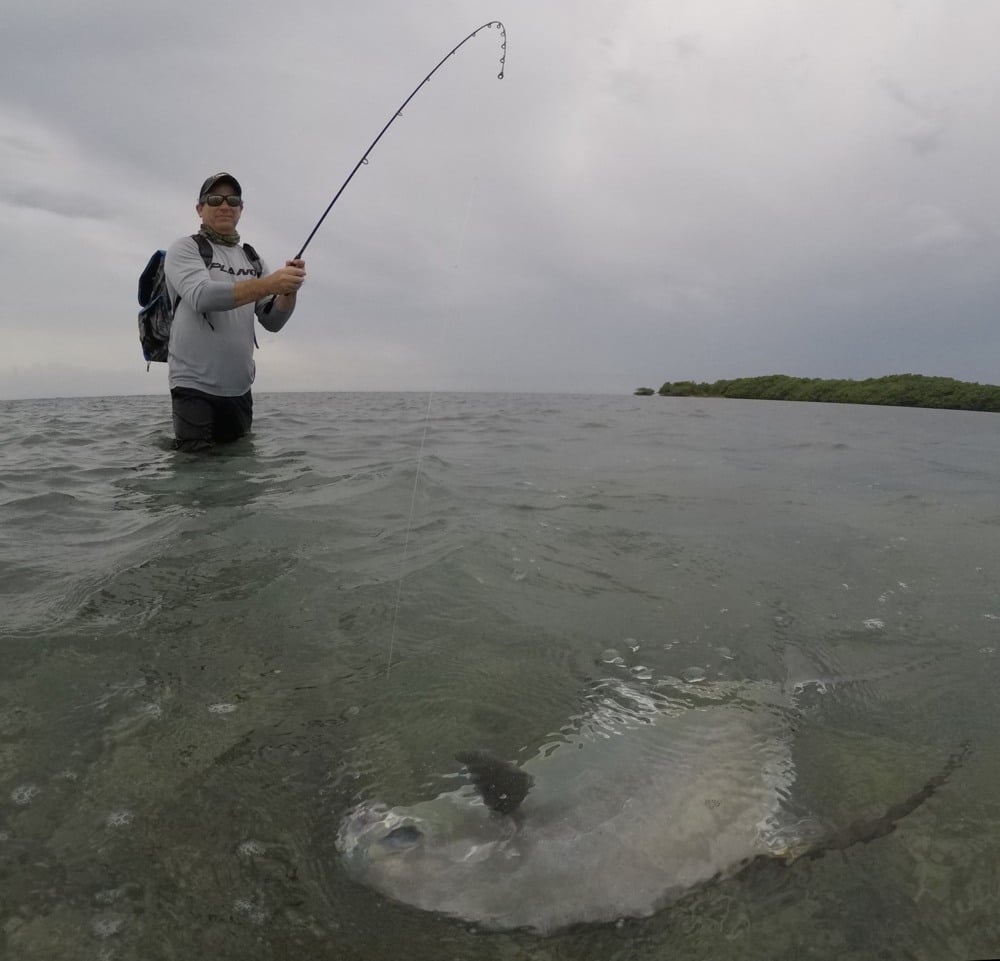
Russell stood motionless. Still sitting in the skiff, I saw his rod tip start to bend slightly. He released the light braided line with his index finger to remove all tension, and maybe 10 seconds later, set up on what was at that moment a chrome flash to my eyes.
With a shout suggesting he’d just won a few million dollars in some lottery, Russell worked to put the brakes on the trip’s first fish, and shortly after, he was releasing a permit of modest proportions.
A Really Cool Place
That catch, made before the other three anglers in the group had even started fishing, seemed to bode well for our Roatan fishing adventure.
We had made the trip to the large island of Roatan, some 40 miles off the coast of Honduras, not really knowing what to expect. That accounted for part of the appeal of the adventure. Most of us had visited some of the better-known fishing destinations in the western Caribbean, but — like many anglers — none of us knew much about Roatan.
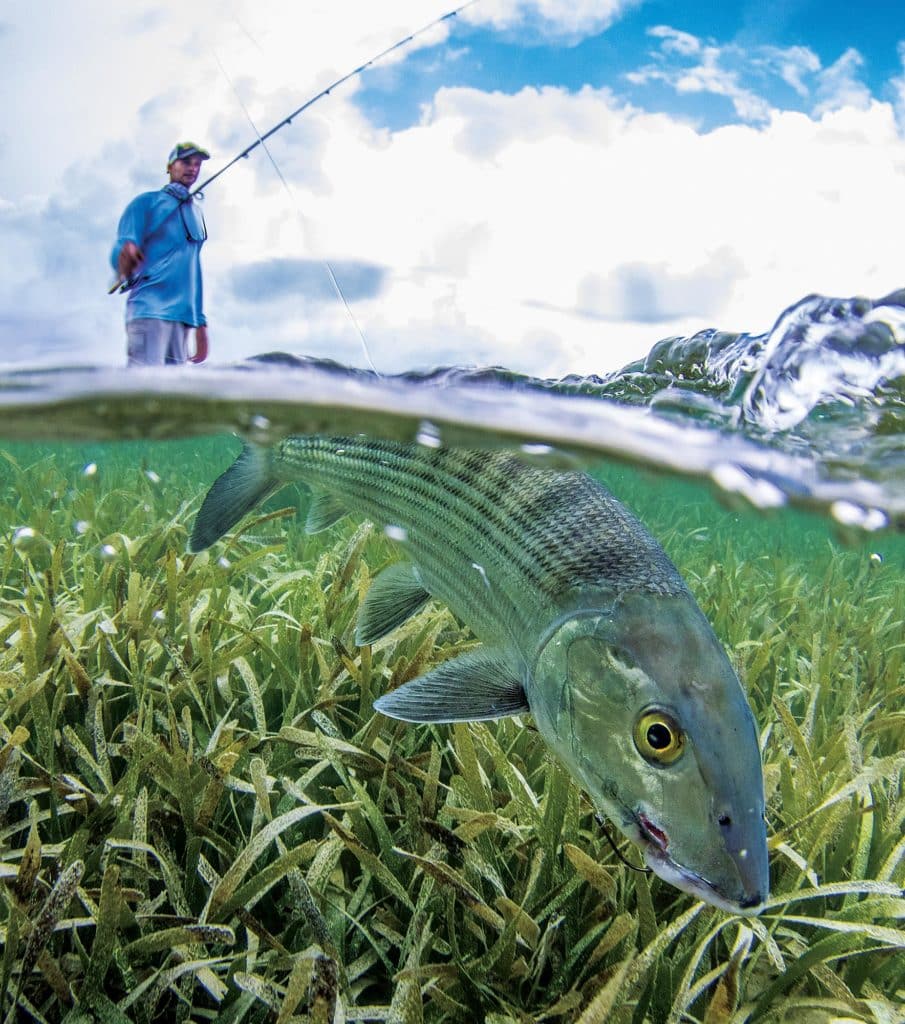
Our expectations included some great flats-fishing and the chance to spend a few days in a really, really cool place called Mango Creek Lodge. It’s hard to imagine anyone seeing photos of this unique, rather whimsical little resort and not finding it appealing, with its brightly colored round cabins built over turtle-grass beds in clear Caribbean waters.
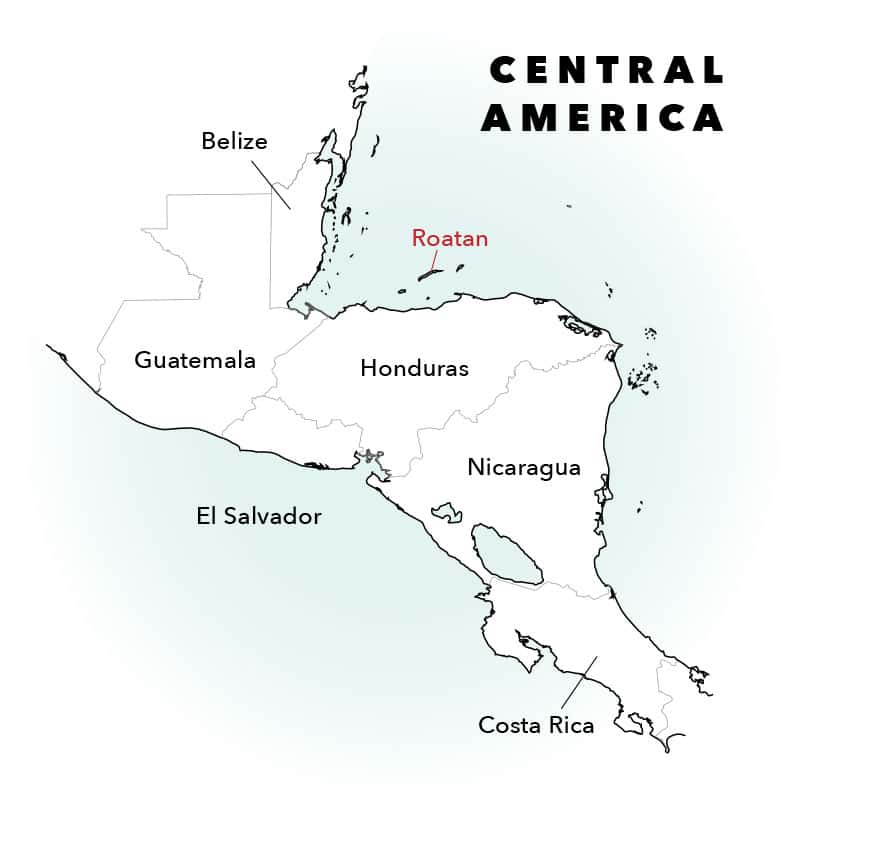
In some ways, Roatan is more obscure than remote: After all, it’s only a two-hour flight south of Miami. It sits at the southern end of what’s known as the Mesoamerican Barrier Reef System, one of the largest such reefs in the world, stretching more than 600 miles from Honduras north to the top of the Yucatan.
Accordingly, we brought gear both for the flats and for reef-fishing. (We already knew that some excellent fishing for pelagics could be found in the blue waters off the island, but we were curious about the extensive reefs, which also make Roatan a favorite with divers and snorkelers.)
But our first fishing day was all about the flats.
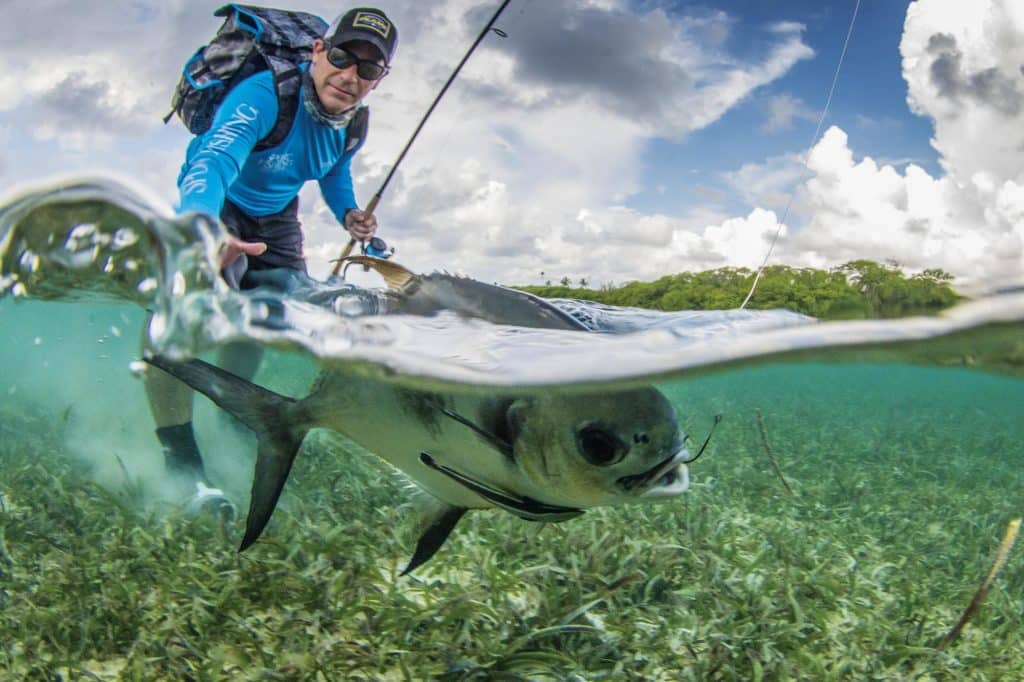
Bones All Around
We learned that day of several flats within an easy boat ride of the lodge, on the island’s east end. More-distant flats around the islands of Morat and Barbaretta can be fished but require a bit more time commitment to reach, since the lodge’s 16-foot, locally made skiffs powered by 40-horse outboards aren’t speedsters.
The V-hull boats, fairly heavy and bare-bones, lack any sort of poling platform. In fact, they’re used primarily to transport anglers to the flats where they stalk their quarry while wading, though they can also cast from the boats when fishing deeper water or around mangroves.
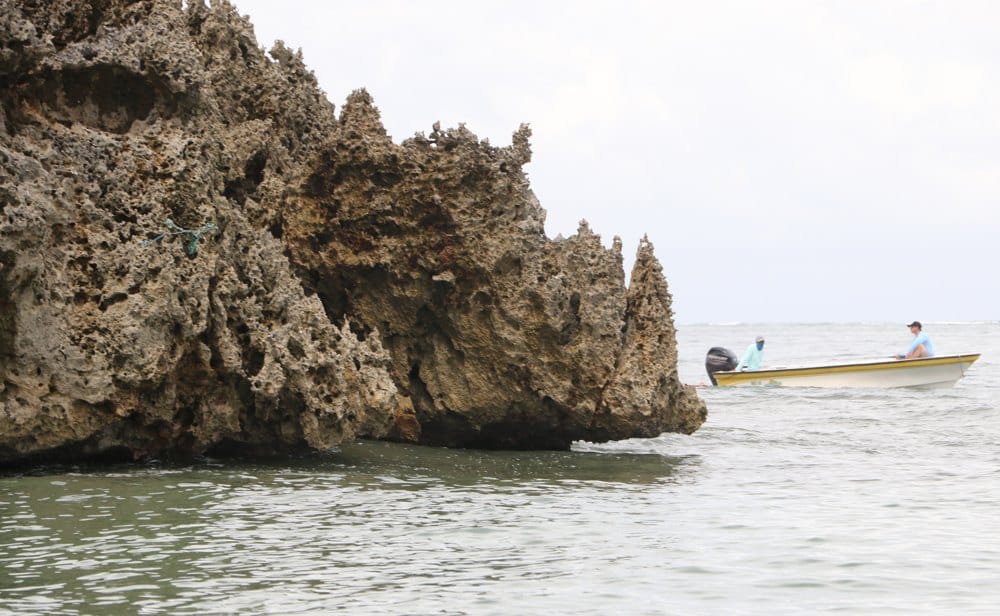
While fishing at Mango Creek is often a fly-fishing show, we had brought light spinning gear. I have done well in some areas fishing small white Gulp! tails for bonefish, but the ticket for action here seemed to be hermit crabs. Our guides, Cooper and Joevy Bodden, each had a bucket of the critters in his skiff. The crabs constantly dragged their shell homes around the bucket and occasionally managed to climb out.
All anglers that first day cast to and caught bonefish, some of respectable if not trophy size. None replicated Russell’s feat to land a permit, though we certainly saw more. Late in the morning, Andrew Cox, offshore community leader for Costa sunglasses, had his shot when the oversize permit he hooked took off unstoppably toward deeper water and severed the line on the edge of coral.
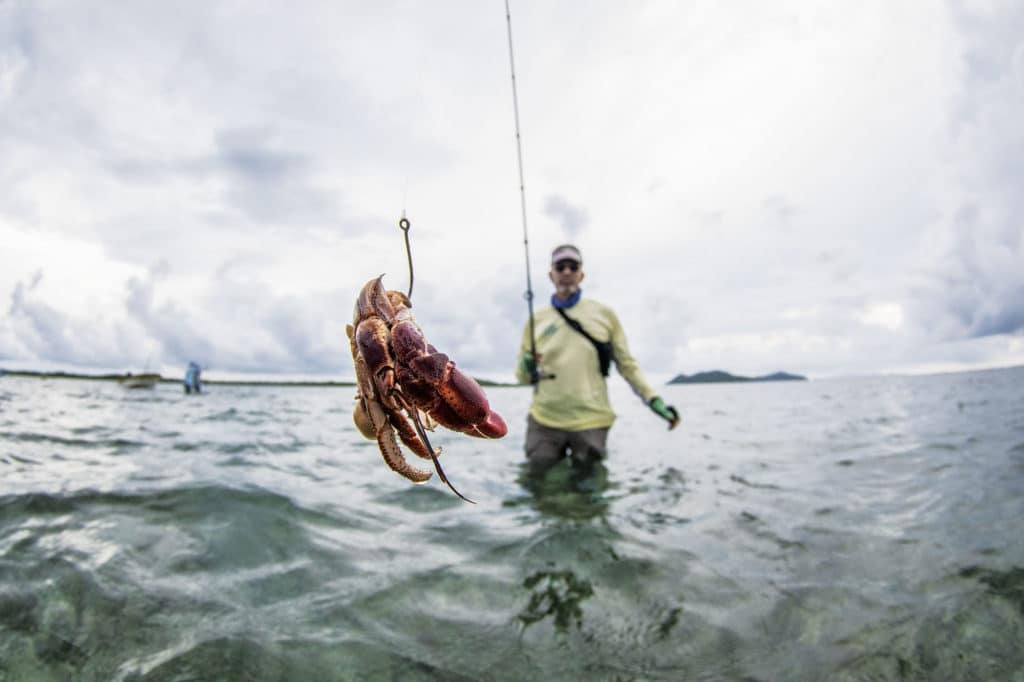
New Bucket-List Target
On another day, we fished the same group of flats but had to contend with intermittent rain. Russell, our king of permit, landed another, and we managed a few bonefish on the flat just across from the lodge (its brightly colored huts clearly visible).
What we didn’t catch ended up being a highlight of the day. This particular flat proved a good place to stalk big triggerfish tailing (seriously) around high tide in an area of very shallow water between the flats and the rocky edge where a chop washes in from deeper water.
Apparently, the triggers were willing to risk feeding so shallow, their tails and dorsal fins waving in the air to get a shot at goodies normally off-limits to them. But clearly it made them nervous: They were at least as spooky as permit; stalking them gave us many tense moments, but ultimately, we landed none.
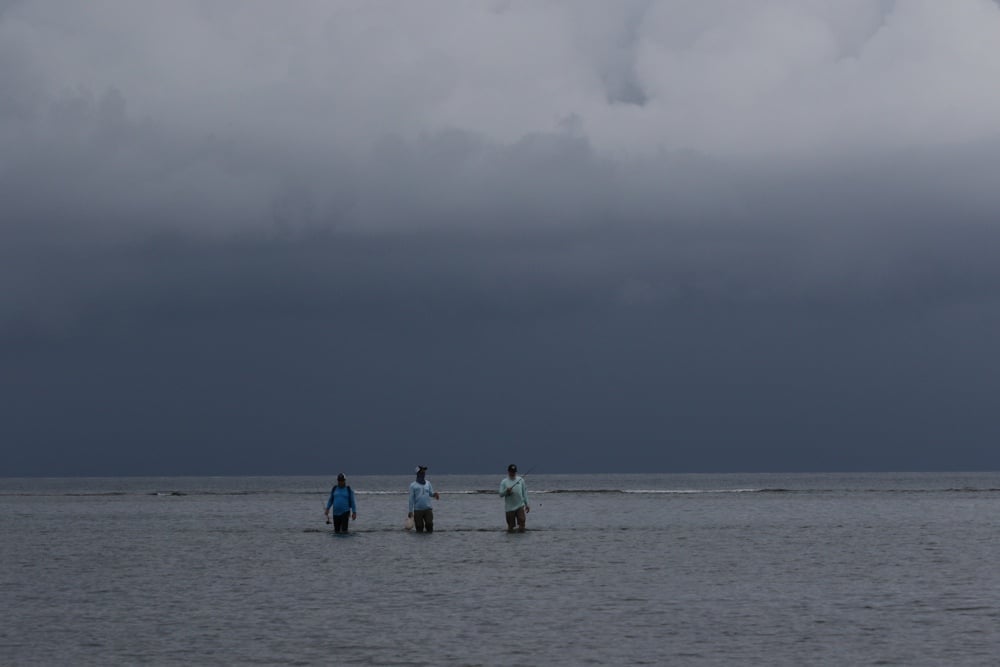
But their agitation paled next to the coolest target of all, compared to which their color sure paled as well. At the very edge of a rocky border where the flats dropped off to deeper water, we could see enormous fish of probably 20 to 40 pounds in shockingly brilliant hues of scarlet and blue.
Our guides assured us that at times those rainbow parrotfish would eat a hermit crab, but getting a crab in front of them proved nearly impossible. With the slightest provocation, they’d explode in a shower of spray and disappear into deeper water. Once or twice I managed to cast beyond them (not easy into the wind while unable to get really close). Even then, the small crab sent them packing when it landed nearby. Another time, I managed to drop a hermit crab well beyond them, and attempted to reel it into the path they were following along the small surf line before they were past it. But spotting the crab moving their way was enough to make them scatter.
Bodden told us he has hooked a couple of these things on crabs. “No way could I stop them,” he said with a laugh. “Man, they’re even stronger than a big permit!”
My sight-fishing bucket list now includes a monster rainbow parrotfish.
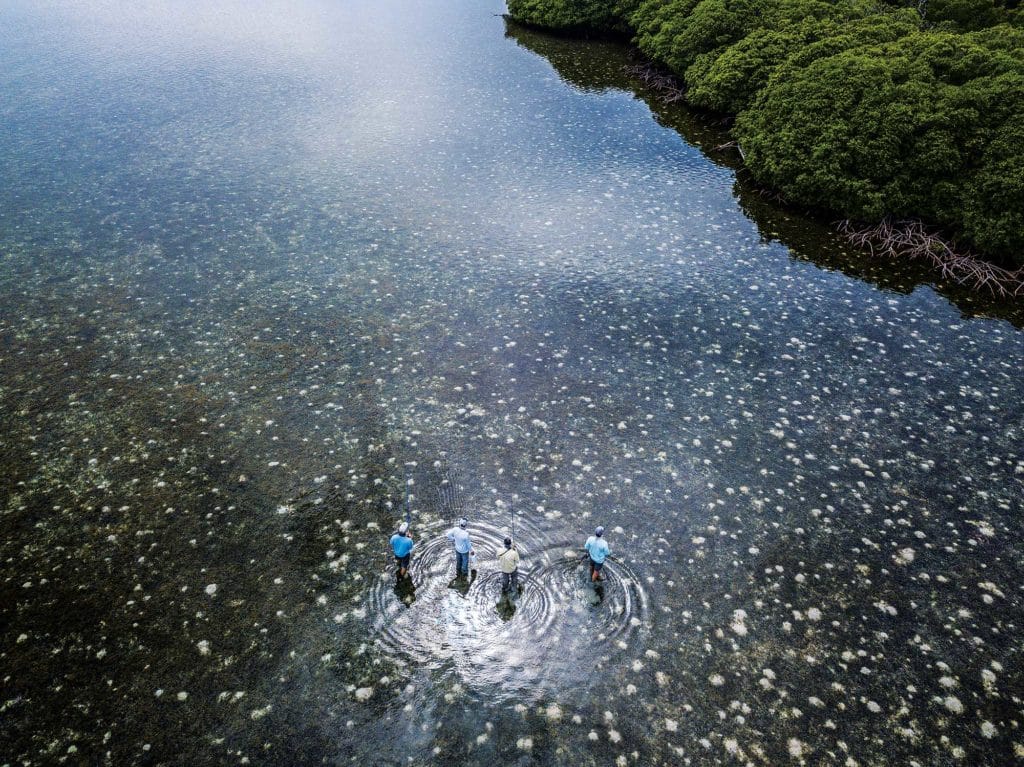
Reefs Amaze, Flats Produce
While we could count stalking fish on the flats as a real success, our efforts at fishing the reefs beyond didn’t provide much to report. I can tell you that the waters are crystal clear and the amazing reefs appear lush, with great drop-offs. But despite our best efforts — not just with metal and bucktail jigs but with live pilchards as well — the total catch came to a skipjack, horse-eye jack, and one hefty barracuda landed by Van Staal’s Chris Littau. Admittedly we were at something of a disadvantage, without a working depth sounder, particularly trying to work the sharp ledges.
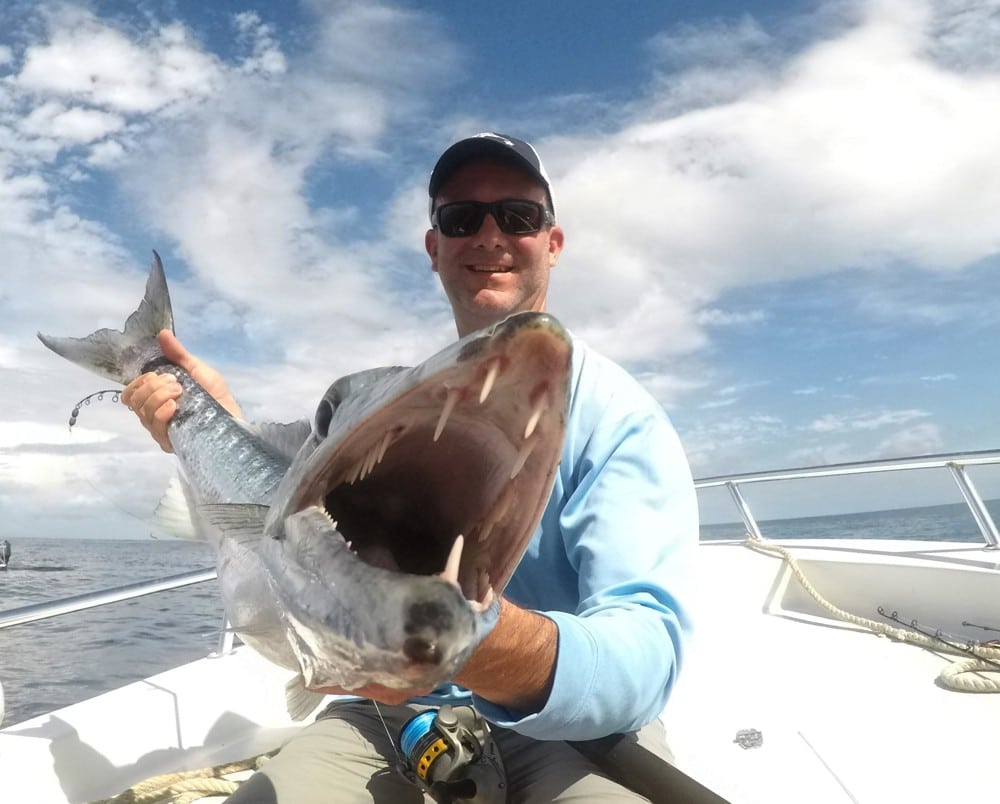
A better bet for an opportunity off the flats, we decided, would be fishing the mangrove channels for tarpon and snook. We spent a few hours doing just that, casting pilchards to the edges of the lush mangroves. Even though tide and conditions conspired against us, Russell nearly struck silver, but a small tarpon tossed the hook back to him in a monumental leap.
Read Next: Fish Caribbean Islands Casting Poppers and Stickbaits
Later that afternoon, we fished by a small island that appeared surreally sculpted from jagged rock. Russell hung what Cooper figured had to be either a larger tarpon or a snook of serious proportions, fishing the deep edges beneath the rock wall.
When all was said and done, we had to rate our adventure to fish Roatan as a success. The flats are productive and — though fished regularly by Mango Creek Lodge clientele — are seldom bothered otherwise, it seems. Moreover, I noted that they’re fabulously healthy, covered with carpets of thick turtle grass. For anyone who wants to combine flats-fishing with diving and/or just plain relaxing with a quiet, laid-back vibe, Roatan and Mango Creek get the job done.
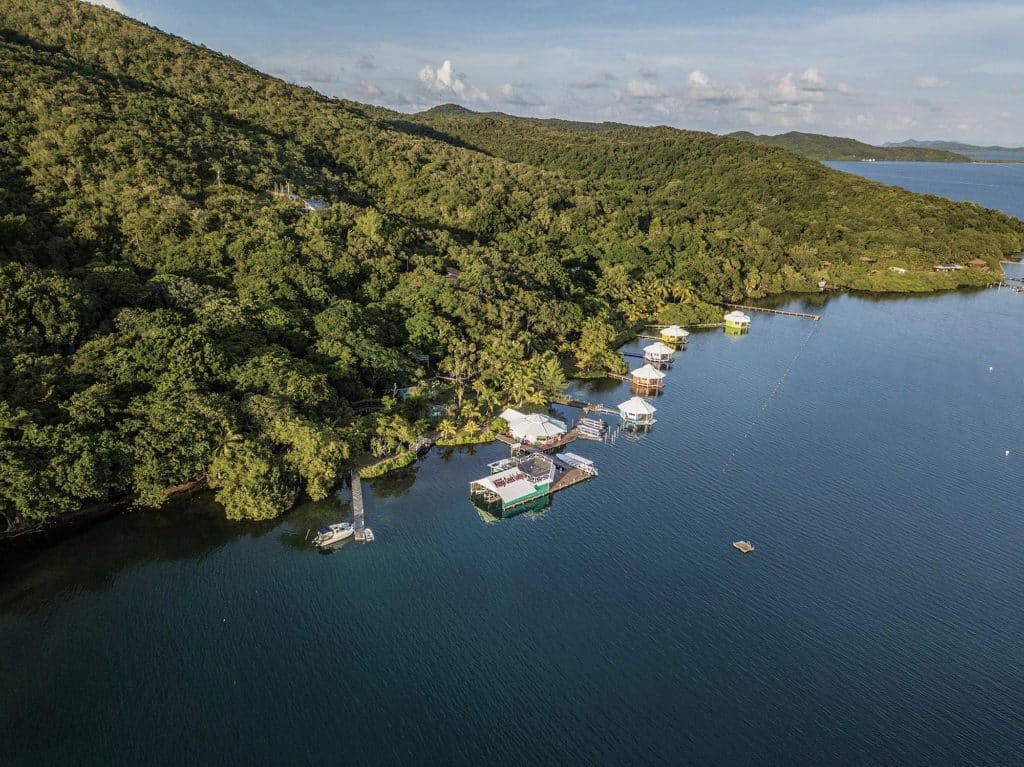
Planning to Fish Roatan
Roatan is a steep, jungle-covered island nearly 50 miles in length and 5 miles at its widest. Coxen Hole, the main city, is often busy (there’s also a cruise-ship terminal there). But as one heads out of the city, the island’s beauty is evident, including spectacular white-sand beaches. English is the first language, though a modified form used by many traditional islanders can be tough to understand. The crystal-clear Caribbean surrounding Roatan and its reefs makes it a mecca for divers in particular. Its fishing opportunities remain far less well-known.
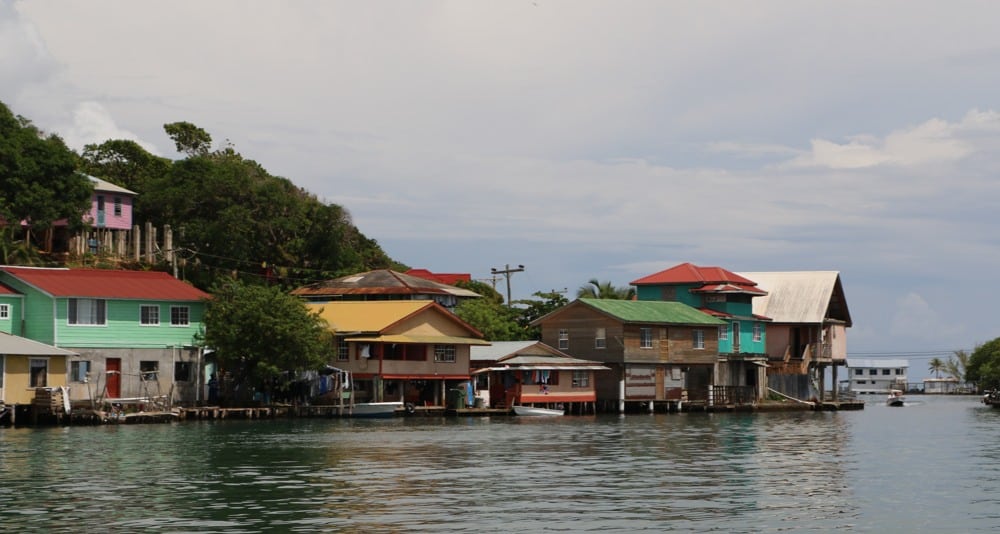
Mango Creek Lodge is located about a half-hour by lodge vehicle from the international airport (served by several major U.S. domestic airlines) in Coxen Hole, plus a 15-minute boat ride.
In six overwater cabanas and three rooms in a lodge on the hill behind, Mango Creek can accommodate as many as 26 guests, but there are usually fewer on hand. The cabanas, finished in rich tropical hardwoods, offer 360-degree windows (and a double screened door that opens directly onto the Caribbean) with ceiling fans. Mango Creek bills itself as an eco-resort, noting that solar energy generates about 80 percent of its power needs. The grounds are well-tended, with walking paths winding among many flowering and tropical-fruit trees and shrubs. Dinners at the lodge, prepared by Tita (spouse of lodge manager Manny Quiroz) struck us as innovative and genuinely fabulous.
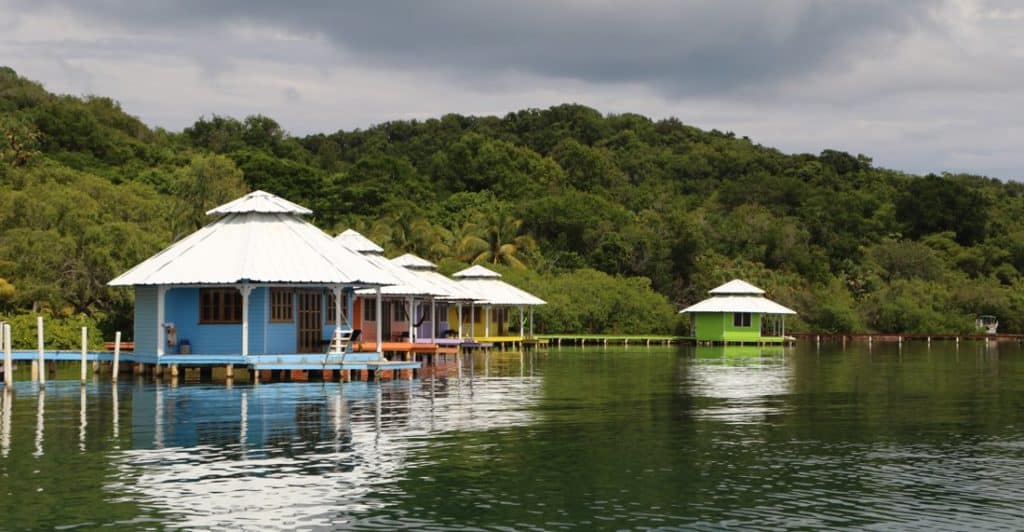
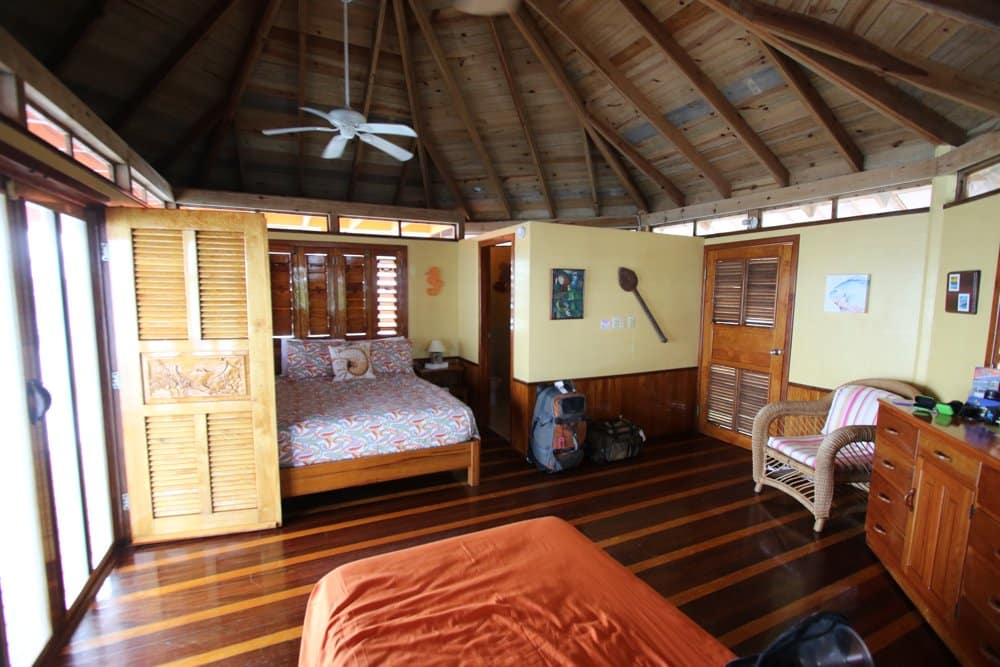
While the majority of flats-fishing effort here comes from fly-rodders, spin-fishermen are welcome. Either way, anglers should bring their favorite flats-fishing tackle with them. Specific suggestions for each of the primary species (bonefish, permit and tarpon) can be found on the lodge website under “Activities/Fishing.” You’ll want a good pair of wading shoes, of course.
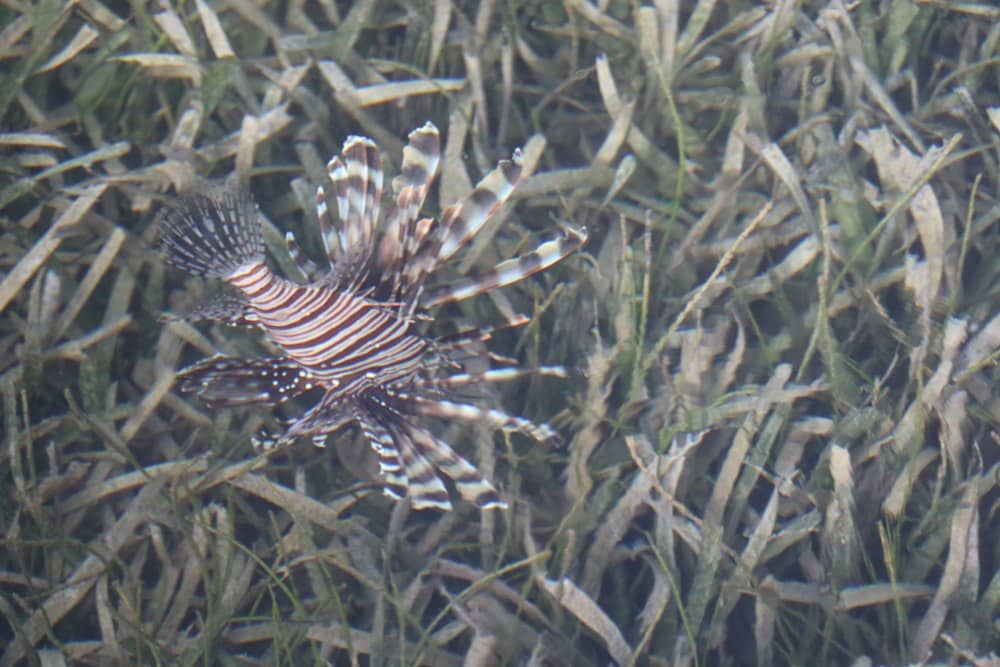
For more information:
Mango Creek Lodge
mangocreeklodge.com
Roatan Tourism
honduras.travel

